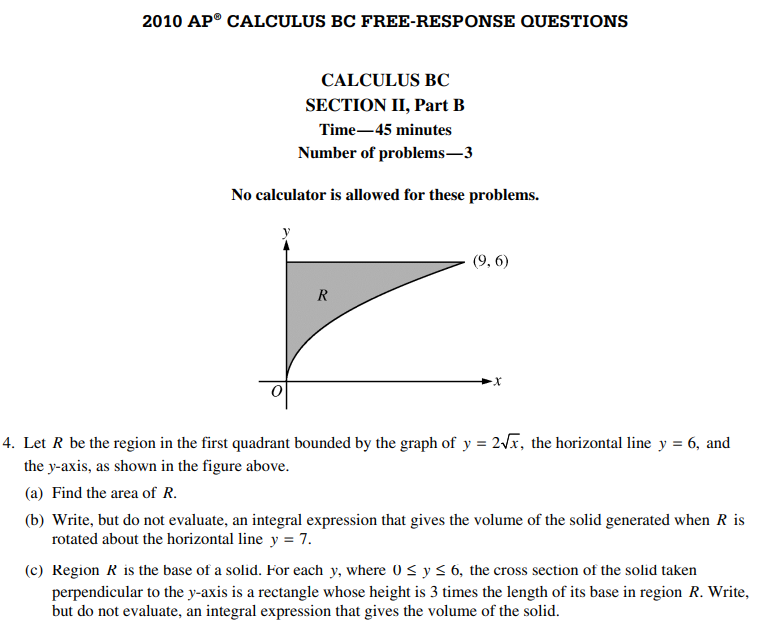AP Calculus BC 2010 Questions And Answers
Related Pages
Calculus Lessons & Past Papers
AP Calculus BC 2022 Exam
More AP Calculus Past Papers and Solutions
AP Calculus AB and BC FRQ
AP Calculus AB and BC MCQ
AP Calculus BC is a challenging, college-level course in calculus that builds upon the concepts learned in AP Calculus AB. It covers topics typically found in the first two semesters of college calculus, providing a more comprehensive understanding of calculus.
Questions And Worked Solutions For AP Calculus BC 2010
Click on the following image to get the complete paper of AP Calculus BC 2010 Free Response Questions. Scroll down the page for step-by-step solutions.

AP Calculus BC 2010 Free Response Questions - Complete Paper (pdf)
AP Calculus BC 2010 Free Response Questions - Scoring Guide (pdf)
- There is no snow on Janet’s driveway when snow begins to fall at midnight. From midnight to 9 A.M., snow accumulates on the driveway at a rate modeled by f(t) = 7tecostcubic feet per hour, where t is measured in hours since midnight. Janet starts removing snow at 6 A.M. (t = 6). The rate g(t), in cubic feet per hour, at which Janet removes snow from the driveway at time t hours after midnight is modeled by
- A zoo sponsored a one-day contest to name a new baby elephant. Zoo visitors deposited entries in a special box between noon (t = 0) and 8 P.M. (t = 8). The number of entries in the box t hours after noon is modeled by a differentiable function E for 0 ≤ t ≤ 8. Values of E(t), in hundreds of entries, at various times t are shown in the table above.
- A particle is moving along a curve so that its position at time t is (x(t),y(t)), where x(t) = t2 -4t + 8 and y(t) is not explicitly given.
- Let R be the region in the first quadrant bounded by the graph of y = 2√x the horizontal line y = 6, and the y-axis, as shown in the figure above.
- Consider the differential equation dy/dx = 1. Let y = f(x) be the particular solution to this differential equation with the initial condition f(1) = 0. For this particular solution, f(x) < 1 for all values of x
- The function f, defined above, has derivatives of all orders. Let g be the function defined by
Try out our new and fun Fraction Concoction Game.
Add and subtract fractions to make exciting fraction concoctions following a recipe. There are four levels of difficulty: Easy, medium, hard and insane. Practice the basics of fraction addition and subtraction or challenge yourself with the insane level.

We welcome your feedback, comments and questions about this site or page. Please submit your feedback or enquiries via our Feedback page.